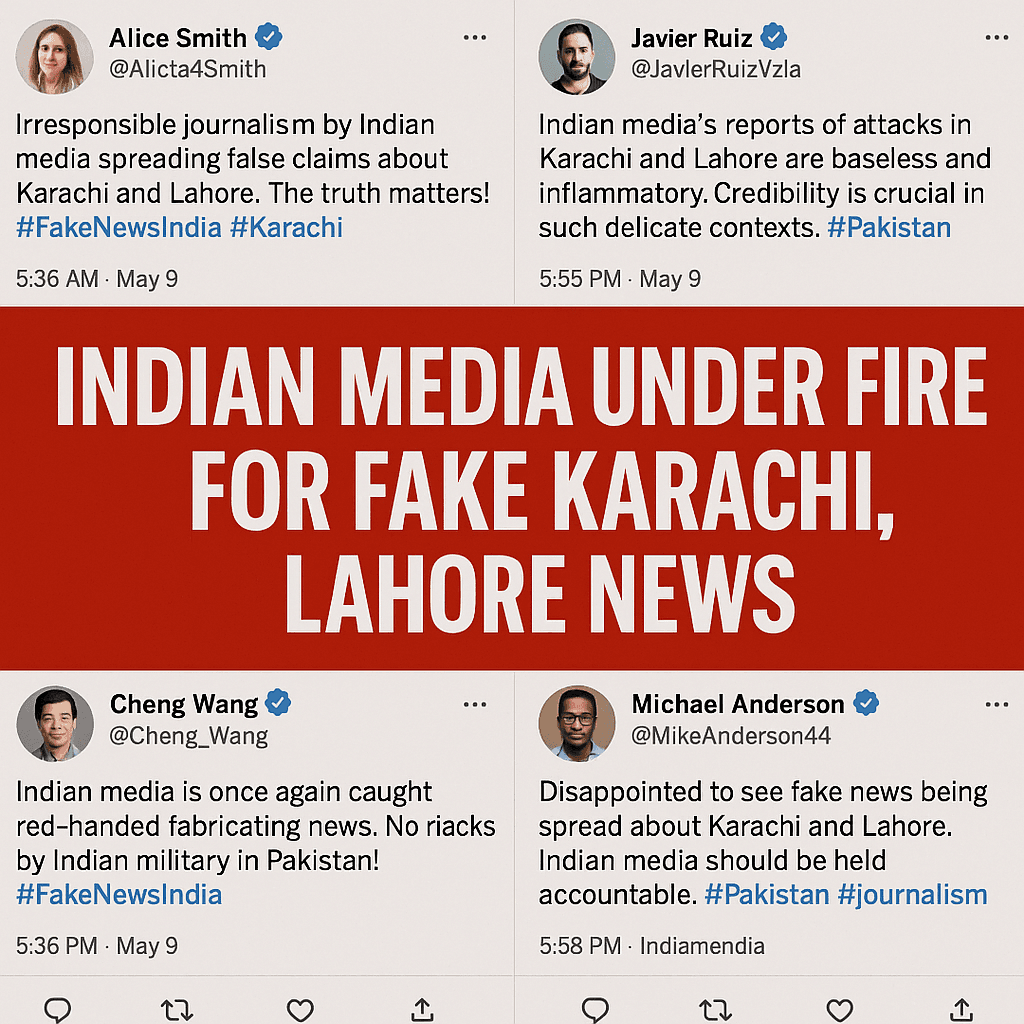
On May 9, 2025, Indian media came under intense scrutiny for spreading false reports of the Indian Army entering Pakistani cities like Karachi and Lahore, allegedly destroying key infrastructure, including ports. This misinformation quickly gained traction on social media, causing panic and outrage in both Pakistan and global circles. However, Pakistani officials, international observers, and independent journalists swiftly debunked these claims, highlighting the dangers of misinformation in tense geopolitical climates.
The Allegations
Several major Indian news outlets reported that Indian military forces had crossed into Karachi and Lahore, causing widespread destruction, including at Karachi Port. These allegations were presented with dramatic visuals and speculative commentary, fueling tensions between the two nations. Headlines like “Indian Army Strikes Karachi Port” and “Lahore Under Siege: Indian Forces Move In” were circulated widely, sparking fears of escalation.
Immediate Response from Pakistan
Pakistani authorities were quick to respond. The Ministry of Foreign Affairs categorically denied the allegations, calling them “baseless and fabricated narratives.” Pakistani military spokesperson Major General Ahmed Sharif stated, “These are blatant lies aimed at stirring panic and disrupting peace in the region.” Real-time videos and images from Karachi and Lahore flooded social media, showing normalcy and debunking the exaggerated claims.
International Media Coverage
International news outlets, including Reuters, BBC, and Al Jazeera, covered the unfolding drama with caution. Many questioned the authenticity of the footage shared by Indian media, citing the lack of independent verification. The Guardian ran a headline: “Misinformation or Miscalculation? Indian Media’s False Reports Spark Outrage.” International observers called for responsible journalism and verification before broadcasting such sensitive information.
Social Media Reactions
Social media erupted with reactions from both sides of the border. Hashtags like #FakeNewsIndia and #PeaceInPakistan began trending within hours. Prominent journalists and influencers criticized Indian media for spreading unverified news. Here are some notable tweets:
- “Sensationalism at its peak. Indian media needs to understand the cost of fake news in conflict zones.” – @Sarah_Journo
- “I’m in Karachi right now, and life is normal. Stop spreading lies!” – @KarachiWitness
- “These fabrications are dangerous. We need peace, not media-triggered conflicts.” – @GlobalPeaceNow
International Reactions
The United Nations and several global leaders, including representatives from the United States, China, and Russia, expressed concerns over the misinformation. They urged both countries to maintain peace and focus on dialogue. UN Secretary-General António Guterres stated, “Disinformation in volatile regions can lead to irreversible damage. We urge responsible reporting and verification of facts.”
Conclusion
The events of May 9, 2025, served as a stark reminder of the power and risks of media influence in international conflicts. While Indian media faced backlash for spreading unverified news, it also reignited conversations about the responsibility of journalism in high-tension scenarios. This incident underscores the need for truth and verification in reporting, especially in regions prone to conflict.

